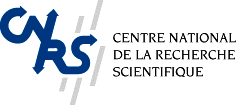
Abell 383: A Massive Lensing Cluster at z~0.2
Credit: Image courtesy of J.P. Kneib & O. Czoske
Observatoire Midi-Pyrénées, CNRS-UMR 5572, Toulouse, France

Abell 383 is not one the most famous Abell
clusters, yet it is one of the most X-ray luminous clusters at
z~0.2. It has therefore been selected with 11 other clusters to be
studied in detail using the best instruments and telescopes currently
available.
The more X-ray luminous a cluster is, the more massive it should be,
and therefore the most spectacular gravitational lensing effects on
the faint background galaxies should be produced by the most X-ray
luminous clusters.
Abell 383 fulfills this expectation and shows beautiful gravitational
arcs and arclets. Indeed, because of its massive core Abell 383 is
distorting the geometry of Space-Time locally, and the background
galaxies seen through that cluster are distorted and amplified by this
imperfect lens. In the image, the cluster galaxies appear with yellow
color, and the background galaxies have a more blue-ish color. Many of
them are visibly arc-shaped, one being especially spectacular close to
the center of the image, to the top right of the central galaxy. But
many others can also be distinguished all around. (Have a
look at a previous image of Week on Gravitational lensing caused
by another Abell cluster, Abell 370).
At larger distance from the cluster center the distorsion induced by
the cluster is becoming weaker and weaker, but because the number of
faint background galaxies is increasing it is still possible to study
the radial profile of the mass distribution out to the periphery of
the cluster. It thus allows astronomers to measure the total mass
properties of these large bound structures, to compare their mass
distribution to the intra-cluster X-ray gas distribution as well as
numerical simulations, and thus to draw conclusions on the structure
of the Universe as a whole.
This color image was made from the B and R-band observations of
the cluster of galaxies Abell 383 using the CFH12k camera during the
nights of November 14-16, 1999. Total exposure times of 7200sec and
6000sec accumulated at 8 and 10 dither positions respectively, were
acquired in the B and R bands.
The seeing quality of these images is good: 0.7 arcsec (FWHM). The
region shown is only the central 3.3 x 3.3 arcmin2 of the
total field of view of 40 x 30 arcmin2 of the CFH12k camera.
A few reduction artifacts are left in the image and should not be
confused with gravitational arcs. At bottom left, there is a bright
and saturated star. The blue linear streak expanding away from its
center is the "bleeding trail" of the detector. This is a common,
well-known phenomenon due to the nature of the electronic
CCD detectors. This feature is an artifact. Also, on the top left part of
the image, large faint trails are visible in dark
blue. They are not gravitational arcs although they have a curvy shape.
They are leftovers from the data reduction process.
Technical description:



